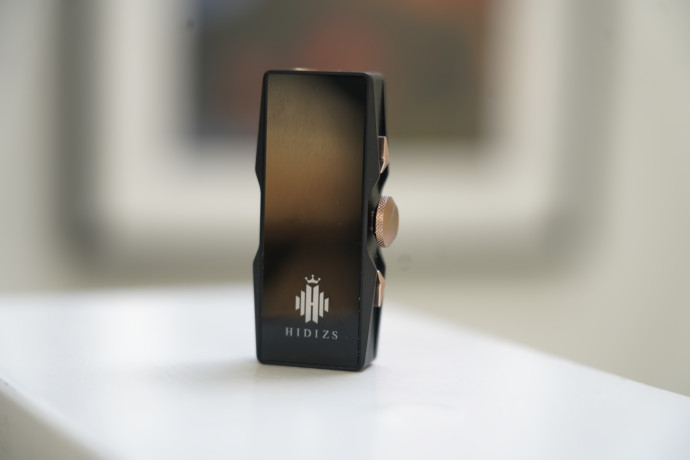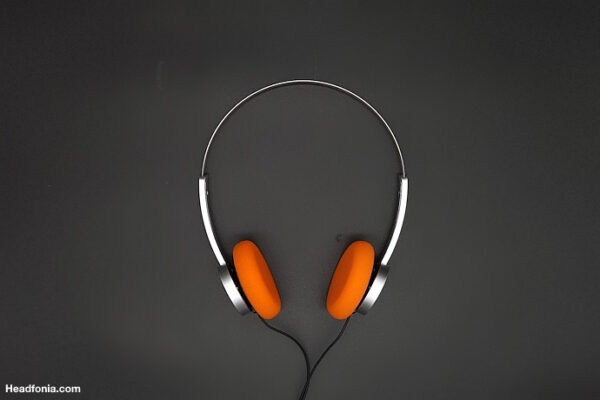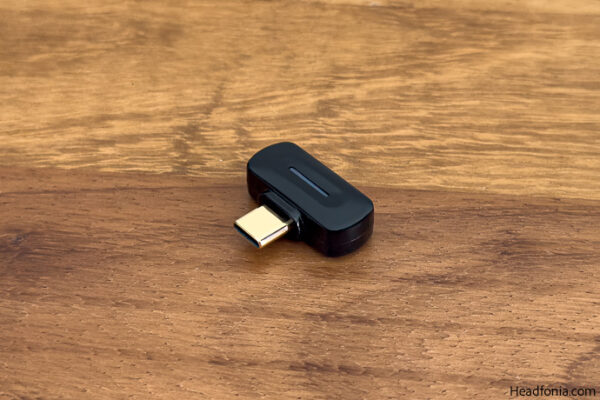In today’s article, we are reviewing the Hidizs S8 Pro Robin, the latest DAC/AMP dongle from the brand, available for just $79 USD
Disclaimer: the Hidizs S8 Pro Robin was sent to us, free of charge, by the brand in exchange for our honest opinion.
About Hidizs
Founded in 2009 by Tamson Tan, Hidizs offers a wide range of DAPs, DAC/Amps, and IEMs, all sharing the same core values: good sound, affordable price, and solid build quality. And if their first model, the AP100, was one of the quirkiest devices I ever held in my life, it was still a solid alternative against FiiO’s or Shanling’s players at the time, for a lesser price.
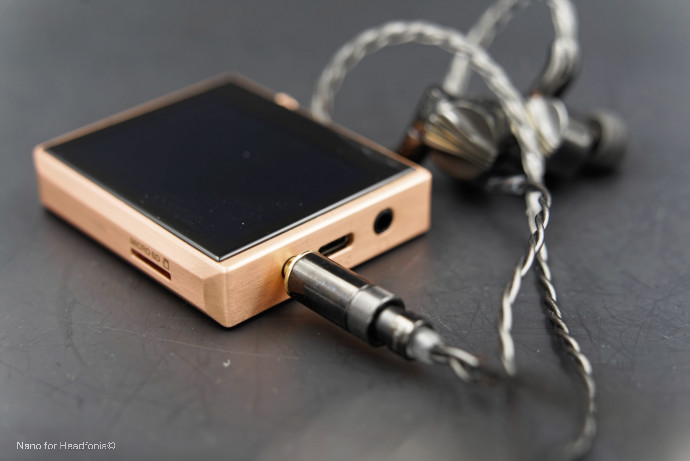
For their second-generation player, the AP200, Hidizs turned to Kickstarter, successfully raising $280,000 from 943 backers. This success marked a turning point for the brand, pushing it toward crowdfunding for many of their future products, such as the AP80 (later the AP80 Pro X), MS5, and S3Pro.
However, like the S9 Pro Plus we reviewed last time, the Hidizs S8 Pro Robin followed a different path, being released through traditional channels. A compact dongle DAC, build on the brand’s strengths, embedding your usual set of dual CS43131, incorporated in a new, refined casing.
Enough to make a splash? That’s what we’ll find out.
Design & Build Quality
Casing
Like the S9 Pro Plus we reviewed a few months ago now, the Hidizs S8 Pro Robin is built around an aluminum frame covered with glass panels. A design reflecting the brand’s more modern design language, ousting the bump seen on the previous model, for a more streamline presentation with the two headphones ports aligned in parallel. Once more, the case embraces the familiar polygonal design from the DH80 and AP80 Pro X, with angular sides, brushed aluminum, nice knobs and the brand’s illuminated logo.

In terms of size, the S8 Pro Robin remains ultra-compact, closely matching the dimensions of the S9. Measuring just 58 mm in length, 23 mm in width, and 11 mm in thickness, and weighing only 17g, it’s identical to its predecessor in weight. With the bundled USB-C cable, it’s as easy to carry around as the FiiO KA15 we tested last week, making it a perfect on-the-go companion.
Neat!
Build Quality
Like every product recently released by the brand, the Hidizs S8 Pro Robin is simply flawless in this regard. Made of one solid piece of “aerospace-grade aluminum”, cut through a CNC machine, the DAC shows an immaculate, screw-less design, from top to bottom, that make it a little more posh than the S8 1st gen. The only drawback, in my eyes, would be the play/pause button, that I found ever so slightly flimsy, but only time will tell!

As for the rest, the USB port feels solid thanks to its recessed design, and the same goes for the headphone ports on the opposite side. The 3.5mm jack remains, but the 2.5mm has been replaced by a 4.4mm Pentaconn, a smart move now that more and more headphones are adopting this standard.
Apart from that, everything looks and feels nice to grasp, but compared to the FiiO KA15, I have to confess that this new device feels a little less impressive, missing the quirkiness offered by the tiny screen and K-7 player design.
All in all, a solid piece of work, that leaves a very good impression.
Comfort and Specifications
Compatibility
Like every modern DAC, the Hidizs S8 Pro Robin can be connected to most digital sources with ease. I tried it on my PC (Windows 10), MacBook (OSX), iPhone with the provided USB-C to Lightning adapter, iPad with default USB-C – and finally the FiiO M23. All worked perfectly and the DAC was immediately recognized each time
There are no specific drivers, but since the S8 supports ASIO drivers, it should be able to decode high-resolution files directly, as long as you can choose to output your files in pass-through mode, from your source.

Daily use
Unexpectedly, the Hidizs S8 Pro Robin is extremely simple to use.
You plug it into your phone, insert your headphone jack, and you’re good to go. There were no issues with my iPhone 13 Pro Max + USB-C/Lightning + S8 Pro Robin, or with my MacBook: each time, the S8 Pro was immediately recognized by the source, and music came out almost instantly. On Windows, I had to wait a minute, until the OS got the right driver but after that, it worked flawlessly.
On the go, it’s a pleasant device to use, and the small size is great for commuters like me. The lightweight body, combined with the elongated design, makes it easy to fit in a pocket, even if the default cable doesn’t ply enough for me.
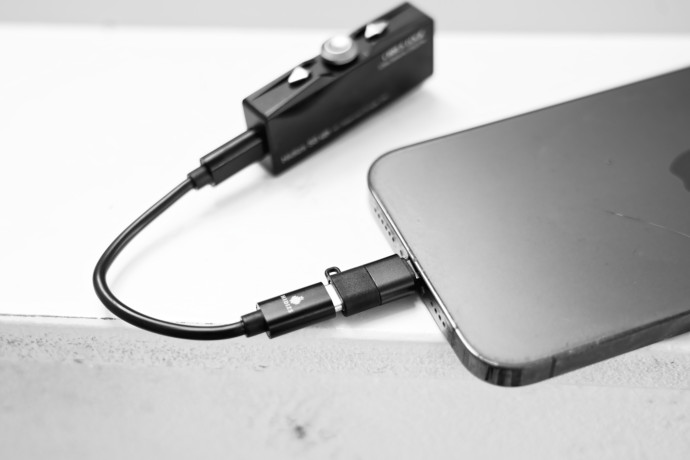
Good news, the S8 Pro Robin kept the volume controls seen on the S9 Pro Plus, which means that you won’t have to reach for your phone every time you want to adjust it. And, if you press both buttons at once, you’ll get access to digital filters selection, allowing you to unlock the full potential of the Cirrus Logic digital filters – a standard feature nowadays, but still a cool feature. Last but not least, underneath the logo, Hidizs have hidden an led indicator, indicating the current sampling rates:
- Yellow: DSD 64/128
- Purple: DSD 256
- Blue: PCM 176.4/192(kHz)
- Red: PCM 352.8/384(kHz)
- White: PCM 705.6/768(kHz)
- Green: PCM 44.1/48/88.2/96(kHz)
Cherry on top, Hidizs not only provides a USB-C to USB-C cable, but also a lightning to USB-C adapter.
Let’s take a quick look at the specs now.
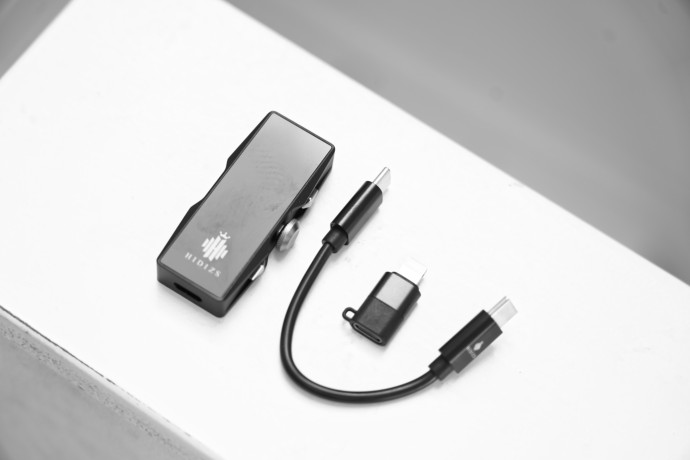
Specifications
Like the ddHiFi TC44C, at the heart of the Hidizs S8 Pro Robin, you’ll find the old, but powerful, Cirrus Logic CS4313. A chip found in many, many audiophiles devices, for a good reason.
Issued from the MasterHiFi series and advertised as a “low power audio DAC with a high-fidelity headphone amplifier to provide a superior system-level audio performance”. And, history has proven that Cirrus really knows cirrus knows a thing or two about it, improving year after year, for the last decade.
As usual, this chip is more of an SOC than a simple DAC, embedding all kinds of features like advanced 32-bit oversampled multi-bit modulator with mismatch shaping technology, or an Integrated GND-centered, Class.

All in all, you get:
- up to 32bits / 384kHz PCM decoding + DSD256 support
- ASIO and Windows driver’s full support
- 3.5mm PO: 80mW per channel @ 32Ω
- 4.4mm BAL: 160mW per channel @ 32Ω
A good setup that should be able to drive most portable headphones, even if high-end and planar will need higher-end solutions. Still, apart from the missing MQA support, this is a great circuitry, outperforming many competitors available in the same price range?
For the nerds out there, here are the full specs.
Technical specs
- Model: Hidizs S8 Robin
- Type: USB DAC
- Chipset: 2x Cirrus Locig CS43131
- Frequency range: 20Hz – 20 000Hz
- Compatibility: PCM up to 32bit/384kHz – DSD up to DSD256
- SNR: 125dB (single-ended) / 128dB (Balanced)
- THD : < 0.0005%, (single ended) / < 0.0006% (balanced)
- Output power: 80mW per channel (single ended) / 160mW per channel (balanced)
- Outputs: 3.5mm (jack) / 4.4mm (Pentaconn)
- Size: 58 x 23 x 11 mm
- Weight: 17 g
- Socket: USB-C
- Output impedance: < 0.7 ohms
- Price: $79
Let’s check the sound now.
The article continues on Page Two, after the click here.
Page 1: About the brand, design and build quality
Page 2: Sound performance







